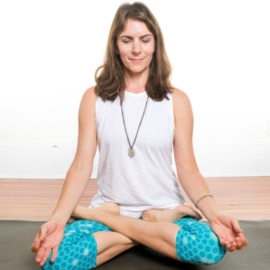Description
YCB Certification Workshops Level 2
Highlights
- Live sessions by a certified international faculty
- Available for national and international students
- Get a first-hand experience of the yogic lifestyle
- Live & Online Sessions will be held over Zoom, Google Duo or Microsoft Teams
- For Online sessions’ time zone: Delhi, India (India Standard Time, GMT 5.5)
- English instruction. Hindi language is provided if needed.
- Course starts every Month
Yoga styles
- Hatha Yoga / Traditional Yoga
What’s not included
- Accommodation
- Food
- Yoga props
- Yoga Certification Board (Govt. of India) Yoga Exam fees
Cancellation Policy
- A reservation requires a deposit of 100% of the total price.
- The deposit is non-refundable, if the booking is cancelled.
Level 2- Yoga Wellness Instructor (YWI)
Theory
Unit 1- Introduction to Yoga and Yogic Practices
- 1.1 Yoga: Etymology, definitions (Patanjala Yoga Sutra, Bhagwad Gita & Kathopanishad), aim, objectives and misconceptions.
- 1.2 Yoga: Its origin, history and development.
- 1.3 Brief Introduction to Samkhya and Yoga Darshana.
- 1.4 Life sketches and teachings of Yoga masters (Maharishi Ramana, Shri Aurobindo Swami Vivekananda, Swami Dayananda Saraswati).
- 1.5 Principles of Yoga and practices of healthy living
- 1.6 Principles and Practices of Jnana Yoga
- 1.7 Principles and Practices of Bhakti Yoga.
- 1.8 Principles and Practices of Karma Yoga
- 1.9 Concept and principles of Sukshma Vyayama, Sthula Vyayama, Surya Namaskara and their significance in Yoga Sadhana.
- 1.10 Concept and principles of Shatkarma: Meaning, Types, Principles and their significance in Yoga Sadhana.
- 1.11 Concept and principles of Yogasana: Meaning, definition, types and their significance in Yoga Sadhana.
- 1.12 Concept and principles of Pranayama: Meaning, definition, types and their significance in Yoga Sadhana.
- 1.13 Introduction to Tri Bandha and their health benefits.
- 1.14 Dhyana and its significance in health and well being
- 1.15 Introduction to Yogic relaxation techniques with special reference to Yoga Nidra
Unit 2 Introduction to Yoga Texts
- 2.1 Introduction to Prasthanatrayee, Purushartha Chatushtaya and goal of human life.
- 2.2 Yoga in Kathopnishad, Prashanopanisha, Tattriyopnishad with special emphasis on Panchakosha Vivek and Ananda Mimamsa
- 2.3 Concept of Sthitaprajna, Bhakti, Karma and Dhyana in Bhagavad Gita.
- 2.4 Significance of Bhagavad Gita in day to day life
- 2.5 Concept of healthy living in Bhagavad Gita (Ahara, Vihara, Achara, Vichara)
- 2.6 Study of Patanjal Yoga Sutra including selected sutras from following chapters (I- 1 to 12, II- 46 – 51, III- 1 to 4).
- 2.7 Concept of Chitta, Chitta Bhumi, Chitta Vritti, Chitta Vikshepa, Chittaprasadanam and their relationship with wellness.
- 2.8 Bahiranga Yoga of Maharishi Patanjali (Yama, Niyama, Asana, Pranayama, Pratyahara).
- 2.9 Antaranga Yoga of Maharisi Patanjali (Dharana, Dhyana, Samadhi)
- 2.10 Concept of mental well being according to Patanjala Yoga
- 2.11 Hatha Yoga: Its parampara, knowledge of basic Yoga texts (Hatha Pradipika and Gherand Samhita). Relationship between Hatha yoga and Raja Yoga.
- 2.12 Sadhaka and Badhaka tatva, principle to be followed by Hatha Yoga practitioner.
- 2.13 Concept of Matha, Mitahara, Pathya & Apthaya.
- 2.14 Concepts of Nadis, Prana and Pranayama for Subjective experiences.
- 2.15 Knowledge of Hatha Yoga practices for wellness (Shatkarma, Asanas, Pranayama, Mudra, Nadaanusandhana).
Unit 3 Yoga for Wellness
- 3.1 General introduction to human body and nine major systems of human body
- 3.2 Introductions to sensory organs (Eyes, Nose, Ears, Tongue and Skin).
- 3.3 Basic functions of nine major systems of human body and homeostasis.
- 3.4 Yogic concept of health and wellness.
- 3.5 Concept of Tridoshas, Sapta Dhatu, Agni, Vayu and Mala; their role in wellness
- 3.6 Concepts of Dinacharya and Ritucharya and their importance in well being.
- 3.7 Importance of Ahara, Nidra and Brahmacharya in well being.
- 3.8 Yogic concept of mental hygiene: Maître, Karuna, Mudita & Upeksha).
- 3.9 Importance of psychosocial environment for health and wellness.
- 3.10 Yogic concept and principles of Ahara(Mitahara, Yuktahara).
- 3.11 Health benefits of Suryanamaskara, Shatkarma, Asanas, Pranayama and practices leading to Dhyana (as per the practical syllabus of the course).
- 3.12 Salient features and contra indications of Yoga practices for well being (as per the practical syllabus of the course).
- 3.13 Knowledge of common diseases; their prevention and management by Yoga.
- 3.14 Knowledge of role of Yoga in the management of non communicable diseases.
- 3.15 Concept of stress and Yogic management of stress and its consequences
Yoga Practical
- Prayer
- 1.1 Concept and Recitation of Pranava
- 1.2 Concept and Recitation of Hymns
- 1.3 Selected universal prayers, invocations and Nishpatti Bhava.
- Yogic Shat Karma
- 2.1 Neti: Sutra Neti and Jala Neti
- 2.2 Dhauti: Vamana Dhauti (Kunjal)
- 2.3 Kapalbhati (Vatakrama)
- Yogic Sukshma Vyayama and Sthula Vyayama
- Yogic Sukshma Vyayama (Micro circulation practices)
- Neck Movement – Griva Shakti Vikasaka ( I,II,III,IV)
- Shoulder Movement – Bhuja Valli Shakti Vikasaka, Purna Bhuja Shakti Vikasaka
- Trunk Movement – Kati Shakti Vikasaka (I, II, III, IV, V )
- Knee Movement – Jangha Shakti Vikasaka (II-A&B ), Janu Shakti Vikasaka
- Ankle movement – Pada-mula shakti Vikasaka – A&B, Gulpha-pada-pristha-pada-tala shakti Vikasaka
- Yogic Sukshma Vyayama (Micro circulation practices)
- Sarvanga Pushti
- Hrid Gati (Engine daud)
- Yogic Surya Namaskara with Mantra
- Yogasana
- 5.1 Tadasana, Hastottanasana, Vrikshasana
- 5.2 Ardha Chakrasana, Padahastasana
- 5.3 Trikonasana, Parshva Konasana, Katichakrasana
- 5.4 Dandasana, Padmasana, Vajarasana,
- 5.5 Yogamudrasana, Parvatasana
- 5.6 Bhadrasana, Mandukasana, Ushtrasana, Shashankasana, Uttana Mandukasana,
- 5.7 Paschimottanasana, Purvottanasana
- 5.8 Vakrasana, Ardha Matsyendrasana, Gomukhasana
- 5.9 Makarasana, Bhujangasana, Shalabhasana, Dhanurasana
- 5.10 Pavanamuktasana and its variations
- 5.11 Uttanapadasana, Ardha Halasana, Setubandhasana, Sarala-Matsyasana
- 5.12 Shavasana,
- Preparatory Breathing Practices
- 6.1 Sectional Breathing (Abdominal, Thoracic and Clavicular Breathing)
- 6.2 Yogic Deep Breathing
- 6.3 Anuloma Viloma/ Nadi Shodhana
- Pranayama
- 7.1 Concept of Puraka, Rechaka and Kumbhaka
- 7.2 Ujjayee Pranayama (Without Kumbhaka)
- 7.3 Sheetalee Pranayama (Without Kumbhaka)
- 7.4 Sitkaree Pranayama (Without Kumbhaka)
- 7.5 Bhramaree Pranayama (Without Kumbhaka)
- Concept and Demonstration of Bandha
- 8.1 Jalandhara Bandha
- 8.2 Uddiyana Bandha
- 8.3 Mula Bandha
- Concept and Demonstration of Mudra
- 9.1 Yoga Mudra
- 9.2 Maha Mudra
- 9.3 Vipareetakarani Mudra
- Practices leading to Dhyana Sadhana
- 10.1 Body awareness and Breath awareness
- 10.2 Yoga Nidra
- 10.3 Antarmauna
- 10.4 Recitation of Pranava and Soham
- 10.5 Recitation of Hymns
- 10.6 Practice of Dhyana
- Teaching Skills (Methods of Teaching Yoga)Geeta Press, Gorakhpur (Samvat 2061).
- 1.1 Teaching methods with special reference to Yoga
- 1.2 Factors influencing Yoga teaching
- 1.4 Teaching Aids : Meaning and Need, Role of Language, Voice, Fluency, Clarity and Body language in an ideal presentation
- 1.5 Methods of teaching Yoga to an individual, small group and large group
- 1.6 Lecture cum demonstration in Yoga: Its meaning, importance and method of its Presentation
- 1.7 Lesson plan: Its meaning and need
- 1.8 Preparation of lesson plan in Yoga, Preparation of lesson plan for an individual and for a group
- 1.9 Presentation of lessons in specific Yogic practices: Kriya, Asana, Pranayama, and Dhyana.
- 1.10 Assessment of a Yoga class (detection and correction of mistakes)
Book for reference for Theory
- 1 Goyandka, Harikrishandass : Yoga Darshan
- 2 Ravi Shankar, Sri Sri : Upanishad, Vol. I
- 3 Swami Vivekananda : Jnana Yoga, Bhakti Yoga, Karma Yoga, Raja Yoga(4separate books) Advaita Ashrama, Kolkata, 2011 & 2012
- 4 Basavaraddi I. V. and Pathak, S. P. : Hathayoga ke Aadhar avam Prayoga(Sanskrit-Hindi), MDNIY, New Delhi, 2007
- 5 Sahay G. S. : HathayogapradipikaMDNIY, New Delhi, 2013
- 6 Gita press Gorakhpur : Shreemad Bhagvadgita Gita press Gorakhpur, Samvat 2073
- 7 Quality Council of India (QCI) : Yoga professionals Official Guidebook for Level 2Excel Books, New Delhi 2016
- 8 Kalidas Joshi and Ganesh Shankar : Yoga ke Sidhant Evam Abhyas,Madhya Pradesh Hindigrantha Akadami,Bhopal, 1995
- 9 Brahmachari Swami Dhirendra : Yogic Suksma Vyayama,Dhirendra Yoga Publications, New Delhi, 1986
- 10 Digambarji Swami and Gharote M.L. : Gheranda Samhita,Kaivalyadhama S.M.Y.M. Samiti, Lonavala 1997
- 11 Sahay G. S.HathayogapradipikaMDNIY, New Delhi, 2013
- 12 Kalayan Upanishads (23rd year Special) Geeta Press, Gorakhpur
- 13 Gore M. M.Anatomy and Physiology of Yogic Practices,Kanchana Prakashana, Lonavala, 2004
- 14 Telles, ShirleyA Glimse of the Human bodySwami Vivekanand Yoga Prakashan, Bangalore, 1998
- 15 Swami KarmanandaManagement of Common Diseases, Bihar Yoga Publication Trust, 2006, Munger
- 16 Bhogal, R. S : Yoga & Mental Health and beyondACE Enterprises, Madhu Rajnagar, Pune Road, Pune, 2010
- 17 Jayadeva, Yogendra : Cyclopedia Vol I, II, III & IV
- 18 Basavaraddi, I.V.How to manage Stress through YogaMDNIY, New Delhi
- 19 Kotecha, Vaidya Rajesh A Beginner’s Guide to AyurvedaChakrapani Publications, Jaipur 2016
- 20 MDNIYYoga Module for Wellness Series (1 to 10)MDNIY, New Delhi 2011
Book for reference for Practicum
- 1. Brahmachari Swami Dhirendra :Yogic Suksma Vyayama,Dhirendra Yoga Publications, New Delhi
- 2. Brahmachari, Swami Dhirendra :Yogasana VijnanaDheerendra Yoga Prakashana, New Delhi
- 3. Iyengar, B. K. S. :Light on Yoga, Harper Collins Publisher, New Delhi, 2005
- 4. Swami Kuvalyananda : Pranayama,Kaivalyadhama, Lonavla, 1992
- 5. Saraswati, Swami Satyananda : Asana, Pranayama, Mudra, BandhaBihar School of Yoga, Munger, 2006
- 6. Basavaraddi, I.VA Monograph on Yogic Suksma Vyayama,MDNIY, New Delhi, 2016
- 7. Basavaraddi, I.V.A Monograph on ShatakarmaMDNIY, New Delhi, 2016
- 8. Basavaraddi, I.VA Monograph on Yogasana,MDNIY, New Delhi, 2016
- 9. Basavaraddi, I.V.A Monograph on Pranayama,MDNIY, New Delhi, 2016
- 10. Tiwari O.P.Asana Why & How ?Kaivalyadhama, SMYM Samiti, Lonavla
- 11. Basavaraddi, I.V. & Bharti Swami Anant Pratah SmaranaMDNIY, New Delhi, 2016
- 12. Saraswati, Swami atyanandaSuryanamashkaraBihar School of Yoga, Munger, 2006
- 13. Joshi K.S.Yogic PranayamaOrient Paperbacks, New Delhi 2009
- 14. Quality Council of India (QCI)Yoga professionals Official Guidebook for level 2Excel Books, New Delhi 2016
- 15. Basavaraddi, I. V. & others :Yoga Teachers Manual for School TeachersMDNIY, New Delhi, 2010
- 16. Gharote, M.L.Teaching Methods for Yogic practices,Kaivalyadhama Ashram, Lonavla
- 17. Iyengar, B.K.S Yoga Shastra (Vol-I & II) Ramamani Iyenger MemorialYoga, Institute, Pune YOG, Mumbai





